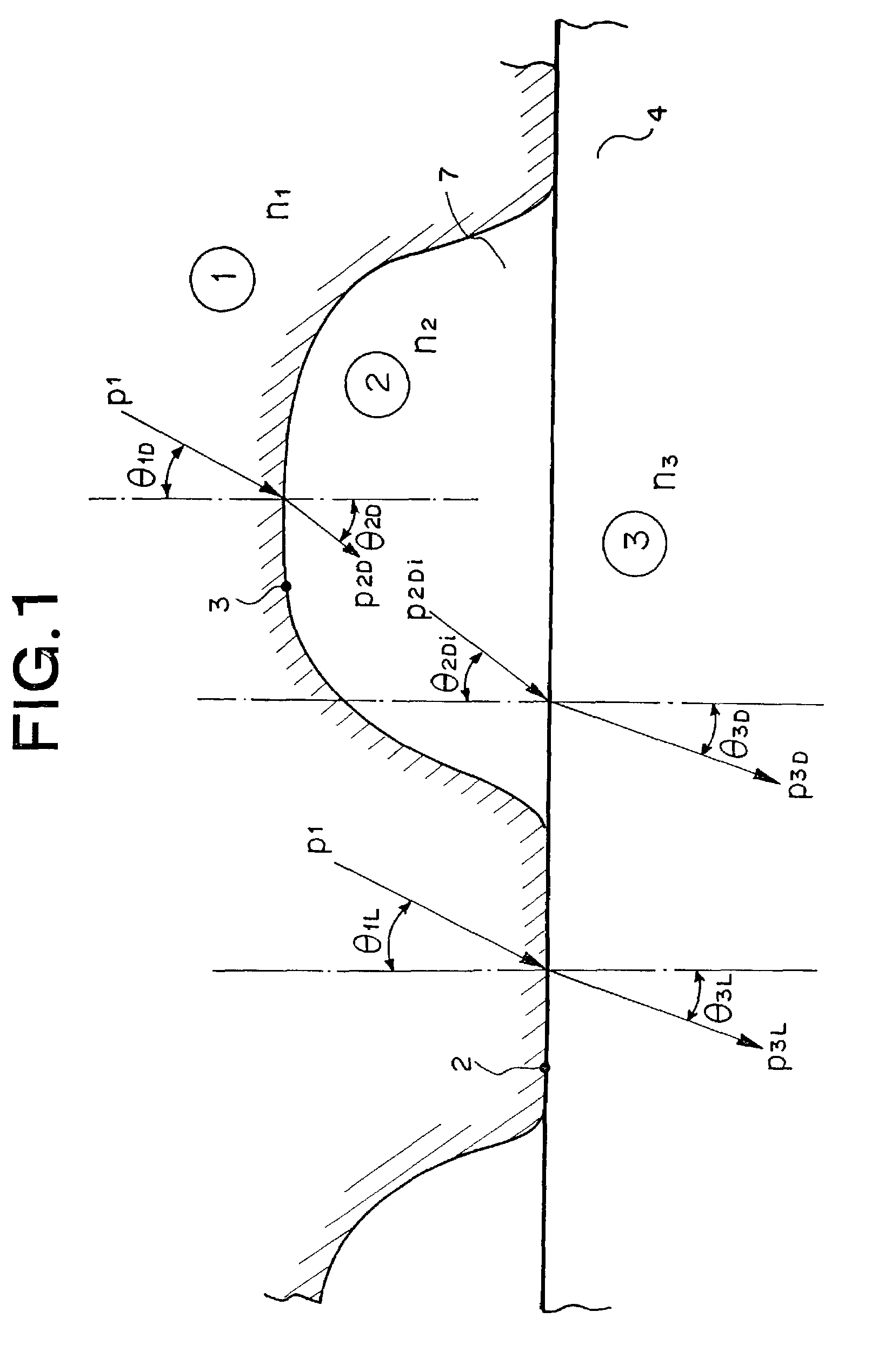Fingerprint input device
a technology of input device and fingerprint, which is applied in the direction of program control, instruments, testing/monitoring control systems, etc., can solve the problems of generating the reflectance product of the two reflectances, and achieve the effect of low cost and high practicality
- Summary
- Abstract
- Description
- Claims
- Application Information
AI Technical Summary
Benefits of technology
Problems solved by technology
Method used
Image
Examples
embodiment 1
[0160]FIGS. 12A and 12B show Embodiment 1 in which a very thin fingerprint input device according to the present invention is mounted on a printed circuit board. FIGS. 13, 14 and 15 show the operation states (operation principles) for fingerprint sensing when using the fingerprint input device, respectively.
[0161]FIG. 13 is a block diagram showing the configuration of the fingerprint input device according to Embodiment 1 of the present invention. In FIG. 13, reference numeral 5 denotes a two-dimensional image sensor which two-dimensionally detects the strength and weakness of light depending on the irregularities of a finger 1, 27 denotes an image processing portion which generates a fingerprint pattern by subjecting the output of the two-dimensional sensor 5 to an image processing, and 28 denotes a pattern recognition portion which extracts the feature of the fingerprint pattern generated by the image processing portion 27, compares the extracted feature with a predetermined refer...
embodiment 2
[0173]Embodiment 2 will next be described. FIGS. 16 and 17 are fragmentary sectional views of two kinds of fingerprint input devices according to Embodiment 2. A cover film 8 of a two-dimensional image sensor is intended to stabilize the characteristic of the sensor element, should be formed in a semiconductor manufacturing process and is normally thinner than several micrometers due to a semiconductor device manufacturing method used. If the finger is repeatedly, directly pressed against the cover film 8, the durability of the film 8 is adversely influenced by the contact of the finger. Therefore, in Embodiment 1, a transparent solid film 4 is provided and the thickness, refractive index and hardness of the transparent solid film 4 are specified. Among them, it is the thickness condition that contradicts the durability condition. Namely, as the transparent solid film 4 is thinner, a clearer image is obtained. As the transparent solid film 4 is thicker, the durability of the film im...
embodiment 3
[0186]In Embodiment 3, a micro-lens layer which has been recently used to enhance the sensitivity of an image sensor is employed as a protection film.
[0187]In Embodiment 3, a micro-lens 13 as a dome-shaped transparent solid is covered right over the photosensitive portion of an image sensor as shown in FIG. 20, whereby light incident on portions other than the photosensitive portion is converged on the photosensitive portion and the light detection sensitivity of the sensor is enhanced. When a fingerprint ridgeline portion contacts the micro-lens 13, the ridgeline is shaped as indicated by 13-1 and the light detection sensitivity of the sensor is enhanced by the convergence of the light on the photosensitive portion. However, the light incident on the micro-lens 13 from a valley portion 13-2 is emitted once to a space and the light from this portion becomes unavailable. As a result, the light in the 100% region of the fingerprint ridgeline portion cannot be detected. Nevertheless, s...
PUM
 Login to View More
Login to View More Abstract
Description
Claims
Application Information
 Login to View More
Login to View More - R&D
- Intellectual Property
- Life Sciences
- Materials
- Tech Scout
- Unparalleled Data Quality
- Higher Quality Content
- 60% Fewer Hallucinations
Browse by: Latest US Patents, China's latest patents, Technical Efficacy Thesaurus, Application Domain, Technology Topic, Popular Technical Reports.
© 2025 PatSnap. All rights reserved.Legal|Privacy policy|Modern Slavery Act Transparency Statement|Sitemap|About US| Contact US: help@patsnap.com



